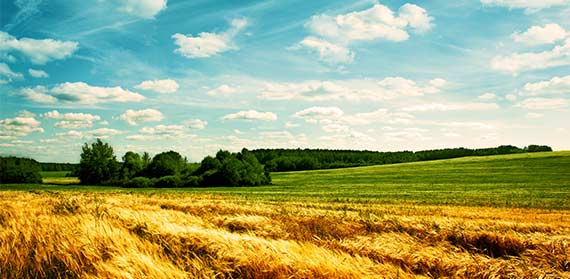Guest blog by Katie Hartless Rose, PhD Research Student in the Centre for Agroecology, Water and Resilience.
Farmers have traditionally shared knowledge and new techniques with their farmer neighbours via local farmer meetings, pub visits and chatting over the hedge between each other’s fields.
Whilst I have been investigating agroecological farming methods in the UK in relation to climate change, it has become apparent that geographical distance separated those farmers who were using, and could be sharing about, the same techniques. For example, one farmer I interviewed who was farming using agroecological techniques learnt at a Regenerative Agriculture course (RegenAG UK 2013) was in the north of the country, but was surrounded by conventional farmers, whilst the closest agroecological farmer using those methods was on his own in the Midlands.
To overcome this, knowledge sharing has spontaneously evolved by farmers at opposite ends of the country, so that they are now able to chat about their successes and difficulties in implementing new farming techniques such as mob grazing through the Internet, forums, emails, YouTube and social media. It became apparent to me that they had transformed the traditional hedge to an electronic hedge, over which they shared knowledge online.
“So what we learn online from other people or visiting other people, we can apply to our context and take bits from here and there.” (Farmer RH, Midlands, 2016)
One successful example of this is the Pasture-Fed Livestock Association (PFLA) google group (Pasture-Fed Livestock Association 2015). The farmers in this group all keep their cattle or sheep out on grass or pasture land for most of the year, only bringing them in when the fields get too wet or cold. Many have begun to apply mob grazing techniques which involve splitting up your field into small paddocks and then moving your animals from paddock to paddock every day, only allowing them one day to graze a section. This improves the soil and grass quality, which in turn improves the health of the animals[1]. Any farmer in the PFLA who needs advice about mob grazing or other techniques can ask their questions on the google group and many will reply with useful answers. As the google group is for members only, it enables them to ask questions which might seem simple, without feeling stupid.
“I think I posted the question about running out of grass and not having much silage and then there was a huge slate of replies from lots of other people. There’s been a couple of questions I posted on it, they have resulted in an awful lot of discussion. I have found it a really useful tool, the pasture fed Google group.” (Farmer PV, South-East, 2015)
Using the electronic hedge, has not only enabled farmers to share and learn with other interested farmers, who were geographically disparate, but also has helped those farmers in more isolated areas to feel connected to a networked and connected community of farmers who all employ agroecolgical techniques. The use of YouTube, Skype, web cameras and emails enables electronic peer to peer learning. It also allows mentoring of a farmer using a new technique by one who is further along in applying that agroecological method.
“We are really in a very traditional farming area, so to have somebody who could, I don’t know just lean over the gate, or be at the end of the phone and say ‘you are doing this, but how about doing that?’ That would be really useful, it’s a sort of mentoring role really.” (Farmer A, North-East, 2015)
The sharing of farmer knowledge over a hedge is no longer physically between two fields, but instead, via the Internet, the virtual hedge spans the country, allowing one farmer in Northumberland to talk to another farmer in Cornwall and view their techniques. It enables farmers to move beyond the conventional farming in their area, and be supported in creating change which is invaluable in improving the quality of soil, animal health, and their own livelihoods.
Pasture-Fed Livestock Association (2015) Pasture-Fed Livestock Association – Google Groups [online] available from <https://groups.google.com/forum/#!aboutgroup/pasture-fed> [13 October 2015]
RegenAG UK (2013) Regenerative Agriculture United Kingdom: Putting Life Back into Farming [online] available from <http://www.regenerativeagriculture.co.uk/> [25 January 2013]
[1] Whilst mob grazing is a new technique, it is based on rotational grazing which has been around for centuries, in fact there is a saying amongst farming that I have heard repeated frequently when attending Farm Walks and on farm workshops which says “Sheep should never hear the church bell twice in the same field” (i.e. assuming the church bell only rings on a Sunday, and you don’t (like I do) live near a church that has weddings and bell ringing practice frequently, you would move your sheep at least once a week). So to some extent mob grazing is just more intense that the original rotational grazing.




Comments are disabled